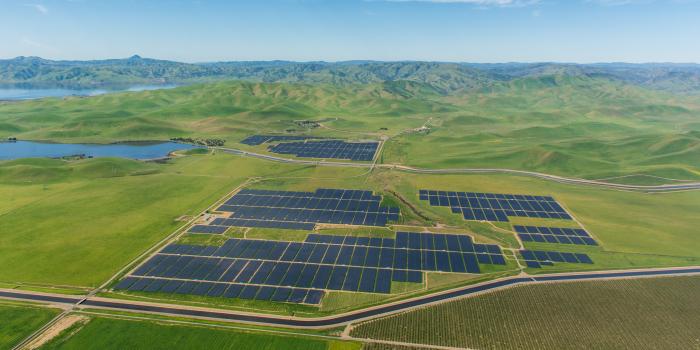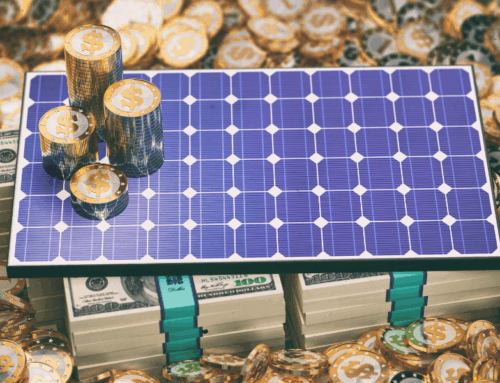When it comes to solar energy pros and cons, we’ve heard it all: It’s for hippies, it’s too expensive, or it doesn’t work. Yet more solar energy systems are being installed on homes and businesses than ever. We explain some FAQs about the pros and cons of solar energy.
ADVANTAGES OF SOLAR ENERGY
1. SOLAR IS A PROVEN TECHNOLOGY.
The history of photovoltaic solar power began with scientific experimentation during the late 1800s. The first PV silicon cell capable of converting the sun’s energy into power that could run electrical equipment was introduced in 1954, and by 1983, worldwide PV production exceeded 21 megawatts. Currently, there are 47.1 gigawatts of total solar capacity installed nationwide, so it’s safe to say solar is a proven technology and that its adoption as a source of clean energy will continue. Sea Bright Solar’s long history in the industry is an advantage, as we’ve had plenty of time to perfect and improve our solar products. The company has been in business for more than 30 years and globally has installed more than 8.2 gigawatts. That’s more than 25 million solar panels! SunPower® solar panels are the most efficient, durable technology on the market, with an expected useful life of more than 40 years.1
2. SOLAR WORKS IN MANY CLIMATES.
Many people believe that solar won’t work in colder climates. That’s not true. Solar panels actually work more efficiently in colder temperatures because excessive heat can reduce output voltage. While more hours of direct sun exposure will indeed help a solar system generate more electricity, modern panels are quite efficient and can still generate energy in low-light situations. Someone living in Seattle, for example, just may need a somewhat larger solar array to get the same results as someone in Southern California. Bottom line: Solar works anywhere there is daylight. (Learn more.)
3. SOLAR IS MORE AFFORDABLE THAN EVER.
The price of a solar system has dropped significantly. Between 2016 and 2017 alone, the cost dropped 9 percent, and prices continued to decline. In many markets worldwide, solar power is less expensive than conventional energy. There are a variety of financial incentives available, such as tax rebates and state policies that help make going solar affordable for more families and businesses. There are also a variety of solar financing options, from no-money-down leasing.2 to home improvement loans that make solar more affordable. With SunPower, you can buy, lease, or finance a solar power system. If you purchase a solar power system in the United States, you may be eligible for a 30 percent federal income tax credit and other local incentives.3 Businesses, schools, and government entities may also qualify to use federal investment tax credits or accelerated depreciation for commercial solar panels.
4. SOLAR ENERGY BENEFITS THE WHOLE ELECTRICITY GRID.
Around the world, excess solar energy can be used by the conventional utility grid, reducing the burden on the whole, and, depending on local policies, the solar owner may even be compensated for that contribution via, for example, feed-in tariffs in some international markets such as Japan and parts of Europe. In most U.S. states, there are net metering policies. Net metering is a billing strategy that essentially pays solar users for their surplus electricity by giving them credit against their use of the electrical grid at night. (For more, read about net metering here.)
5. SOLAR PANELS HAVE A LONG LIFESPAN.
Solar panels are quite durable and can withstand even harsh weather conditions, including the impact of hail up to one inch in diameter. Only 1-in-20,000 SunPower panels are ever returned.4
6. SOLAR PANELS CAN INCREASE HOME VALUES.
One of the advantages of solar energy is that the addition of PV panels generally increases home values. A recent study by the U.S. Department of Energy’s Lawrence Berkeley Laboratory analyzed about 22,000 home sales, almost 4,000 of which use PV solar systems in eight states. It found that a typical PV system added about $15,000 in value.5
7. SOLAR IS A NONPARTISAN ENERGY SOURCE.
Solar isn’t just for hippies. It is being embraced by people across the entire sociopolitical spectrum. Homeowners covering all demographics, Fortune 500 and oil companies, governments, and schools across the world continue to install solar energy systems. Mainstream banks are financing solar. Progressive solar policies have been driven at the state level by Republicans and Democrats alike. The environmental benefits of solar power are undeniable, but it’s being embraced widely because it makes good financial sense.
DISADVANTAGES OF SOLAR ENERGY
1. SOLAR DOESN’T WORK AT NIGHT.
Some people interested in solar might wonder if, by going solar, they can live completely off the grid. This isn’t realistic in most applications of solar technology. While many solar companies, including SunPower, are investing in home battery storage solutions, the batteries are not quite yet a widespread option for most homeowners. Solar energy is mostly used in real-time, with any excess delivered back to the conventional utility grid. Solar households rely on utility grids for power at night and in other situations where sunlight is limited. However, for commercial solar users such as schools, government facilities, and businesses, this is less of a limitation thanks to Sea Bright Solar + storage solutions.
2. SOLAR PANELS ARE NOT ATTRACTIVE.
Beauty is in the eye of the beholder, but today’s solar panels are generally sleek, compact, and fit snugly against the roof. We take particular pride in our SunPower Equinox™ home solar system. With its minimalist design, we’ve eliminated unnecessary hardware and utility boxes on exterior walls. The inverter box is hidden behind each panel, which looks more attractive AND maximizes the amount of power your system can generate. Our proprietary InvisiMount® frame is nearly invisible, so the panels appear to float just above the roof. Buyers also have the choice of our SunPower® Signature™ solid black solar panels, which have a distinctively elegant appearance.
3. YOU CAN’T INSTALL A HOME SOLAR SYSTEM YOURSELF.
While you might think that not being able to install solar yourself is a disadvantage, letting the experts handle it turns going solar into a very simple process. (See our Five-Step Guide.) Professional solar installers have expertise in designing solar systems for homes and businesses, ensuring the system captures the maximum amount of sunlight available. It saves you the most money on your electric bill. SunPower dealers know local permitting rules, so they can make that process go as smoothly as possible, and of course, someone with electrical experience needs to handle the wiring. You can get a free consultation to find out what it will take to switch your home or business to solar energy.
4. MY ROOF ISN’T RIGHT FOR SOLAR.
It’s true that solar won’t work on every building, depending on shading and roof orientation. To make the most out of your solar system, it helps to have plenty of roof space that gets a lot of sunshine. But solar companies are used to working with these issues, and you’ll find out in your free consultation how a solar system will best fit on your property. It’s worth noting that because SunPower solar panels are the most efficient you can buy, you need fewer of them on your roof so that you can generate more energy in a smaller space. That high efficiency also means our panels are better at generating more energy in low-light situations, such as shading, so if your roof isn’t fully in the sunlight, your system will still be making electricity. And, because our inverters are behind each panel, if one panel is in the shade, the others will be able to pick up the slack.
5. SOLAR HURTS THE ENVIRONMENT.
Solar panels are a manufactured product, and — as with any building process — there is an environmental impact, from the chemicals used to make the panels to transportation and beyond. However, solar is one of the least-polluting forms of energy generation available. And SunPower builds the most environmentally friendly solar panels possible. We raise the bar for environmental and social sustainability through our “Beneficial by Design” philosophy that aims to be a regenerative force on the environment and society. From our DC panels that have achieved Cradle to Cradle CertifiedTM Silver recognition to our Light on LandTM program, we are proud to lead the industry in environmental stewardship.
6. NOT ALL SOLAR PANELS ARE HIGH QUALITY.
It’s true there is a wide variety of panels on the market with varying levels of efficiency, durability, reliability, output, and design. We strongly recommend that you do some research before selecting panels for your home or business, considering the impact of each of these factors on your system’s output and the long-term cost savings you can expect. It’s worth it to invest in top-quality solar panels. After all, what other technology around your home or business do you expect to be still working for you three decades from now? We’re so confident in our panel quality that we offer a best-in-industry 25-year Power and Product Warranty for home or commercial use.
1SunPower Module 40-Year Useful Life,” SunPower white paper. 2013. Useful life is 99 out of 100 panels operating at more than 70% of rated power.
2 For qualified customers in select locations where leases are available.
3 Tax credits and local incentives vary and are subject to change. SunPower does not warrant, guarantee, or otherwise advise its partners or customers about specific tax outcomes. Consult your tax advisor regarding the solar tax credit and how it applies to your specific circumstances. Please visit the dsireusa.org website for detailed solar policy information.
4 “Fraunhofer PV Durability Initiative for Solar Modules: Part 2”. Photovoltaics International, 2014.
5Source: Hoen, B., Adomatis, S., Jackson, T., Graff-Zivin, J., Thayer, M., Klise, G., & Wiser, R. (2015). Selling Into the Sun: Price Premium Analysis of a Multi-State Dataset of Solar Homes. Based on an analysis of homes with and without solar systems in 8 states from 1999 through 2013. Actual impact on home values will vary.
This post originally appeared on the SunPower Resources Blog.








